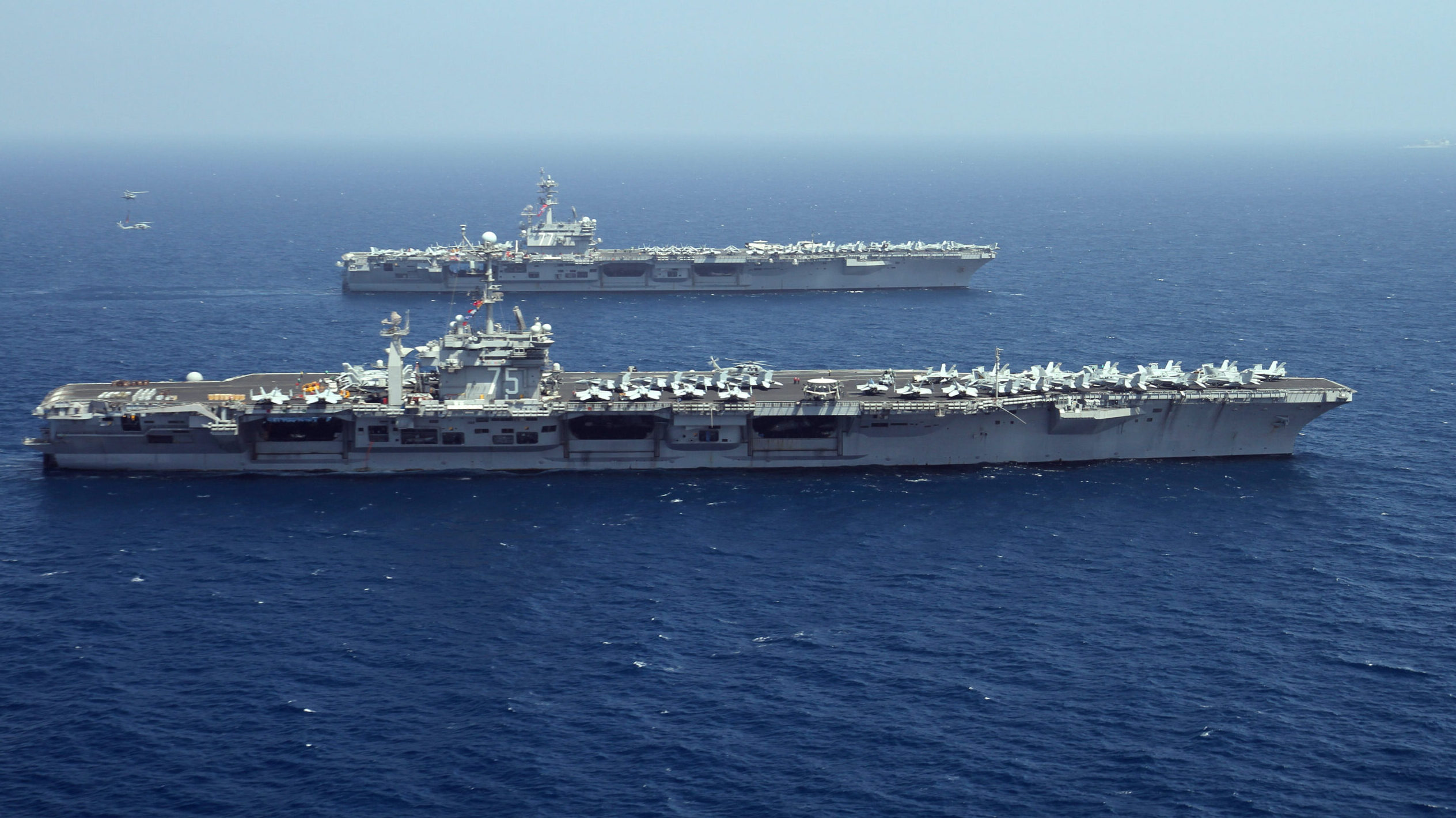
The Navy plans to bring Project Overmatch’s capabilities to a carrier strike group within the next two years. (U.S. Navy photo by Lt. Juan David Guerra/Released)
WEST 2022: Project Overmatch since its inception nearly two years ago has become a favorite topic for senior Navy officers and civilians to publicly name-drop as key to how the service will fight the next, digitally infused conflict. And yet, whatever the military is doing behind the scenes to make Overmatch a reality — and what’s slurping up millions in taxpayer dollars — has been virtually shrouded in secrecy.
On paper, Overmatch is the Navy’s offering for the Pentagon’s Joint All Domain Command and Control effort. The theory is that the future fight requires the service to connect every sensor and shooter in the fleet together to effectively win against China, Russia or any other peer adversary by leveraging a resilient data-sharing and communications infrastructure.
Navy acquisition officials, senior leadership and industry executives from top prime contractors have all offered small clues about structural changes, technology research and development as well as future milestones related to Overmatch. But the service has provided virtually no explanation for how it will achieve its grand vision — a gap in information that is at least somewhat by design.
“We’ve been very deliberate about keeping a low profile… for good reason. Our competitors steal everything. And frankly, they’re not ashamed of it,” Rear Adm. Doug Small, the senior officer in charge of Project Overmatch, told Breaking Defense this week during the West 2022 conference.
Predictably, Small declined to elaborate on the meat and potatoes of Overmatch, instead pointing to Chief of Naval Operations Adm. Michael Gilday’s January 2021 NAVPLAN in which the CNO laid out some of the service’s top priorities moving forward.
“The job of Overmatch is to deliver on the naval operational architecture,” said Small.
The CNO describes the naval operational architecture as “a collection of networks, infrastructure, data, and analytic tools that connects our distributed forces and provides decision advantage.” He went on to characterize developing the naval operational architecture as a top Navy priority, second only to the Columbia-class submarine, according to the NAVPLAN.
Small added that Overmatch is seeking to bring the best commercial companies and their technologies together.
In response to a question from another reporter, Small characterized the core of Overmatch as about “decision advancement” and being able to flow information to whoever needs it and “across the crisis continuum.”
A third reporter asked the admiral to explain Overmatch in terms that he could pitch it to the American public and convey why it is so important to the Navy.
“When you download Yelp [on your phone], Yelp does not come to your house to see if it will open properly, if every possible information flow across every network, whether it’s Wi-Fi, or cellular, or 3G, or 4G or whatever, that all of those data paths work,” he said.
“They don’t need to because they’ve already done all that work on that digital platform. That’s all we’re trying to do…We need to create a digital platform … and then make sure that [it] can communicate and perform the functions of those applications in any environment with whatever data flows are available,” Small continued.
So that is Project Overmatch, a way to share information about a naval battlespace the same way a civilian might get information on a local restaurant. Beyond that, details are apparently not for public consumption, according to the effort’s chief.
But presumably lawmakers, analysts and the press might get to see it in action sometime in the next two years when the service brings the capability onboard a carrier strike group, an explicit goal Gilday re-iterated to reporters this week while en route to West 2022 himself.






















